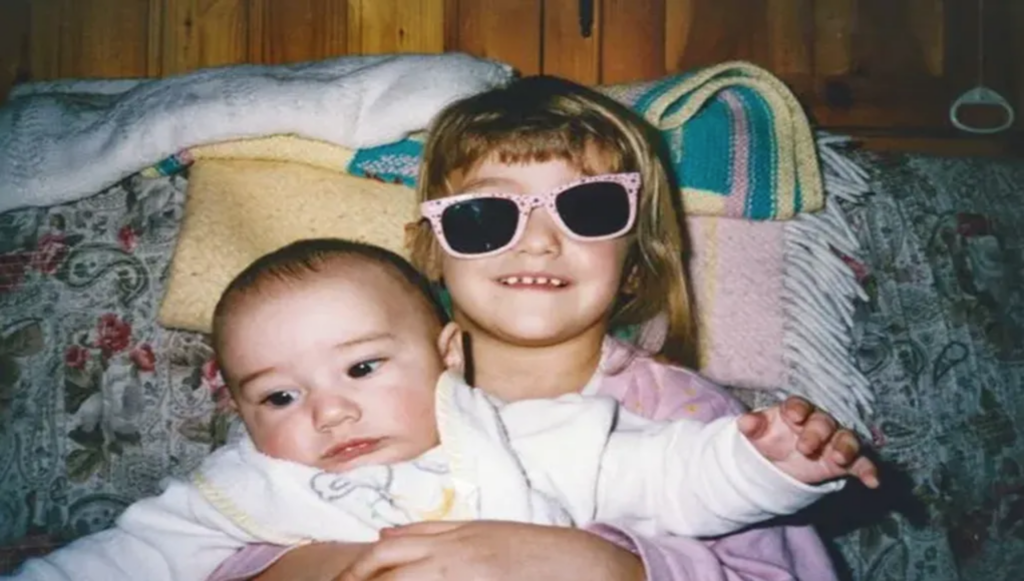Growing up as the eldest of her siblings, author Y.L. Wolfe often grappled with the blurred lines between her role and that of her mother. Recent study observes this as the Eldest Daughter Syndrome.
“By the time my youngest brother arrived, when I was almost 11, I felt an overwhelming sense of responsibility for his well-being. I would often sit by his crib, watching him sleep, to ensure he was safe,” Wolfe, the eldest of four, told the news platform.
“It wasn’t that I doubted my mother’s capabilities ― it was more about feeling jointly responsible for the family at that stage of my life,” she elaborated. “It was as if I had taken on the ‘another mom’ role rather than just being a big sister.”
Understanding Eldest Daughter Syndrome
In other words, Wolfe has a deep understanding of what’s commonly referred to as the eldest daughter syndrome. Online discussions abound, with articles delving into the challenges of eldest daughters and tweets humorously suggesting the need for solidarity: “If you are the oldest sibling and also a girl, you may be entitled to financial compensation,” one individual quipped on X, formerly known as Twitter.
While eldest daughter syndrome is often dismissed as a term from popular psychology ― not officially recognized in the DSM-V diagnostic manual ― a recent study indicates there could be more scientific backing to this phenomenon than previously acknowledged.
A research team led by the University of California, Los Angeles, discovered that in particular scenarios, eldest daughters often exhibit early maturation, which equips them to assist their mothers in raising younger siblings.
More precisely, the researchers observed a connection between the onset of adrenal puberty in first-born daughters and elevated levels of prenatal stress experienced by their mothers.
But why is the timing of adrenal puberty significant? This phase brings about physical changes, such as skin and body hair alterations, and impacts brain development. It’s theorized that adrenal puberty contributes to social and cognitive shifts, linking superficial physical transformations with emotional maturity.
Scientific Insights: The Role of Prenatal Stress
During challenging times when pregnant mothers experience stress, it’s beneficial for their daughters to undergo accelerated social maturation, according to Jennifer Hahn-Holbrook, an assistant professor of psychology at the University of California, Merced, and one of the study’s co-authors.
“This hastened development provides mothers with an earlier ‘helper-at-the-nest,’ assisting them in ensuring the survival of subsequent offspring in harsh conditions,” she explained.
Exploring Adrenal Puberty

When times are tough and mothers are stressed during pregnancy, it’s in the mother’s adaptive best interest for her daughter to mature socially at a quicker pace, the researchers said in their findings.
Adrenal puberty, notably, does not entail breast development or the initiation of menstruation for girls (or testicular enlargement for boys). According to the study, girls reach a level of mental maturity where they can attend to the needs of their younger siblings despite not being physiologically ready to bear their children. This contrast naturally diverts them from their roles as older daughters.
Older brothers appear to evade this form of parental responsibility. The researchers did not observe a similar trend in boys or daughters who were not first-born.
Gender Dynamics: Eldest Daughters vs. Eldest Sons
“One potential explanation for the absence of this effect in first-born sons could be that male children typically contribute less directly to childcare than female children. Consequently, mothers may have less of a motivating factor to accelerate their sons’ social pubertal development,” explained Hahn-Holbrook.
Additionally, she noted that prior research suggests that the timing of puberty in females is more adaptable in response to early life experiences compared to males.
The findings of this study, which were published in the February edition of Psychoneuroendocrinology (try saying that five times fast ― or even just once), were the culmination of a lengthy endeavor. Researchers followed the families for 15 years, from the prenatal stage through the teenage years of the babies.
Women were recruited from two obstetric clinics in Southern California during routine first-trimester prenatal care appointments. On average, these women were 30 years old and expecting one child, not twins.
For approximately half of the participants, this was their first pregnancy. All women were non-smokers and refrained from using steroid medications, tobacco, alcohol, or other recreational drugs during pregnancy. Furthermore, all participants were over the age of 18.
At five different stages of pregnancy, the levels of stress, depression, and anxiety among the women were assessed and then cumulatively measured. The depression evaluation involved rating statements such as “I felt lonely,” while the anxiety assessment inquired about the frequency of specific symptoms, such as feeling “jittery.”
Among the children born to these mothers, 48% were female, and 52% were male.
Long-Term Implications and Success
As the children progressed, adrenal and gonadal puberty indicators were evaluated separately. These indicators encompassed aspects such as body hair, skin alterations, height growth or growth spurts, breast development, menstruation onset in females, voice changes, and facial hair growth in males.
The study also assessed childhood adversity to control for other factors associated with early maturation or puberty signs in children, including parental death or divorce before the age of 5, paternal absence, and economic instability between ages 7 and 9.
Taking all of these factors into consideration, it was observed that the eldest daughters exhibited the most accelerated maturation when their mothers experienced elevated levels of prenatal stress.

“This is a first-of-its-kind finding and is fascinating to look at through an evolutionary lens,” said Molly Fox, a UCLA anthropologist and one of the study’s co-authors.
Furthermore, other research indicates potential long-term benefits for highly responsible eldest daughters: A 2014 study revealed that eldest daughters are the most likely to succeed among siblings, while another 2012 study found that first-borns are more inclined to assume leadership positions.
The discoveries resonate with Wolfe, the previously mentioned author, who expressed feeling like a surrogate mother to her siblings during her upbringing.
“I’m not surprised by the study’s conclusions,” remarked Wolfe. “My narrative differs slightly—I underwent conventional puberty at 12 rather than just adrenal puberty, although I suspect I underwent an early cognitive maturation.”
Fetal Programming: Insights into Maternal Influence
Furthermore, the study is significant for another reason: its findings contribute to the expanding comprehension among social scientists regarding fetal programming, an intriguing field of inquiry that delves into how stress and various emotional and environmental factors experienced by women during pregnancy impact their offspring long into the future.
“This finding is unprecedented and offers an engrossing perspective when viewed through an evolutionary framework,” stated Molly Fox, a UCLA anthropologist and one of the study’s co-authors, in a press release.
In an interview with a news platform, Fox delved into the mechanics of fetal programming in greater detail.
“One intriguing theory suggests that while still in the womb, fetuses receive cues about the forthcoming world, enabling their bodies to adapt flexibly to shape their life cycles optimally for the anticipated conditions,” she explained.
Personal Reflections: A Co-Oldest Daughter’s Perspective
Fox and her colleagues are enthusiastic about making their research available to the public, particularly after following the families for an extended period. The publication of the findings coincided with a cultural discourse on eldest daughters, which was a bonus, especially for Fox, the co-oldest daughter. (She has a twin.)
“As a co-oldest, I believe it’s a unique role within any family, offering potential for closeness with my mother and the ability to assist in caring for younger siblings,” she remarked.
Spoken like a true eldest daughter.
Reference
Is ‘Eldest Daughter Syndrome’ A Real Thing? A New Study May Surprise You [Internet]. Accessed on March 27, 2024. Available from: https://www.yahoo.com/news/eldest-daughter-syndrome-real-thing-104507937.html
About Docquity
If you need more confidence and insights to boost careers in healthcare, expanding the network to other healthcare professionals to practice peer-to-peer learning might be the answer. One way to do it is by joining a social platform for healthcare professionals, such as Docquity.
Docquity is an AI-based state-of-the-art private & secure continual learning network of verified doctors, bringing you real-time knowledge from thousands of doctors worldwide. Today, Docquity has over 400,000 doctors spread across six countries in Asia. Meet experts and trusted peers across Asia where you can safely discuss clinical cases, get up-to-date insights from webinars and research journals, and earn CME/CPD credits through certified courses from Docquity Academy. All with the ease of a mobile app available on Android & iOS platforms!







